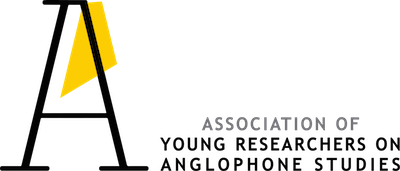“Dying is an Art”: Catharsis and the Purifying Making of the Self in Sylvia Plath’s “Fever 103º”, “Lady Lazarus”, and “Ariel” (pp. 149-161)
Celia Cores Antepazo
University of Salamanca
Abstract
When asked about the possible autobiographical origin of her poems during an interview a year prior to her death, Sylvia Plath answered that they emerged from a kind of non-narcissistic emotional experience purposely manipulated to come as “relevant to the larger things” (Orr 1966, 170). In the decades after Plath’s passing, her poems came to acquire several new, quite narcissistic interpretations that enhanced her status as a poet of death and suicide. As a result, the true nature of her writings was greatly misread and the emphasis on these “larger things” has been since then chiefly obliterated. This note aims at the revalorization of the intensely philosophical depth that her poetry entails, and thus focuses on Plath’s initiatory process of the making of the self in her poems “Fever 103º”, “Lady Lazarus”, and “Ariel”. Following Kroll (1976), Rosenblatt (1979) and Patea’s (1989, 2007) theorizations on Plath’s philosophy of cathartic death and rebirth, the aim of this paper is to analyze such mythic process of initiation in said three poems. Written in 1962 amid a creativity burst, these poems follow a similar structure regarding mythic rebirth, and Plath masterfully evokes in them the self’s emotional experience against a deeply oppressive background. The making of the poetic self in these texts serves Plath to explore her metaphysical concerns on the larger things of life and death. Therefore, this note concludes that, in a progression that is highly influenced by archaic rites of initiation as well as historical, literary, mythological, and biblical texts, the poetic persona faces her enemies and is made anew after purgation as she overcomes the oppressive hindrances caused by earthly life.
Keywords: death; rebirth; catharsis; Plath; initiation
Bionote
Celia Cores Antepazo is a first year PhD candidate and a predoctoral FPU fellow at the department of English of the University of Salamanca. In the field of English Literary and Cultural Studies, her research focuses mainly on memory, resilience, gender, and race, and on how all these interact in North American (counter) narratives.
e-mail address: corescelia@usal.es
References
Bagg, Robert. 1969. “The Rise of Lady Lazarus”. Mosaic: A Journal for the Interdisciplinary Study of Literature, 2:4, 9-36.
Britzolakis, Christina. 2006. “Ariel and Other Poems”. The Cambridge Companion to Sylvia Plath, ed. Jo Gill. Cambridge: Cambridge UP. PDF.
Eliade, Mircea. 1958. Rites and Symbols of Initiation. New York: Harper & Row.
Gill, Jo. 2006. “The Colossus and Crossing the Water”. The Cambridge Companion to Sylvia Plath, ed. Jo Gill. Cambridge: Cambridge UP. PDF.
Govindan, Anumarla. 1997. Sylvia Plath and the Poetry of Experience. A Study of Sylvia Plath’s Dramatic Strategies. PhD diss., Stillwater: Oklahoma State U.
Kroll, Judith. 1976. Chapters in a Mythology. The Poetry of Sylvia Plath. New York: Harper & Row.
Lachman, Gary. 2008. The Dedalus Book of Literary Suicides. Dead Letters. Sawtry: Dedalus. PDF.
Lant, Kathleen Margaret. 1993. “The Big Strip Tease: Female Bodies and Male Power in the Poetry of Sylvia Plath”. Contemporary Literature, 34:4, 620-669.
Lowell, Robert. 1966. Introduction to Ariel. Poems by Sylvia Plath. Ed. Ted Hughes. New York: Harper & Row.
Nelson, Deborah. 2006. “Plath, History and Politics”. The Cambridge Companion to Sylvia Plath, ed. Jo Gill. Cambridge: Cambridge UP. PDF.
Orr, Peter. 1966. The Poet Speaks: Interviews with Contemporary Poets Conducted by Hilary Morrish, Peter Orr, John Press and Ian Scott-Kilvert. Abingdon: Routledge & K. Paul.
Patea, Viorica. 2007. “La inquietud Metafísica en la Poesía de Sylvia Plath”. Asparkía, 18, 59-79.
—. 1989. Entre el Mito y la Realidad: Aproximación a la Obra Poética de Sylvia Plath. Salamanca: Ediciones Universidad de Salamanca.
Plath, Sylvia. 2018. The Collected Poems. Ed. Ted Hughes. New York: Harper Perennial.
Rose, Jacqueline. 1991. The Haunting of Sylvia Plath. London: Virago.
Rosenblatt, Jon. 1979. The Poetry of Initiation. Chapel Hill: U of North Carolina P.
Sanazaro, Leonard. 1983. “The Transfiguring Self: Sylvia Plath, a Reconsideration”. The Centennial Review, 27:1, 62-74.
Smith, Pamela A. 1972. “The Unitive Urge in the Poetry of Sylvia Plath”. The New England Quarterly, 45:3, 323-339.
Strangeways, Al. 1996. “‘The Boot in the Face’: The Problem of the Holocaust in the Poetry of Sylvia Plath”. Contemporary Literature, 37:3, 370-390.Young, James E. 1987. “’I May Be a Bit of a Jew’: The Holocaust Confessions of Sylvia Plath”. James E. Philological Quarterly, 66:1, 137-147.

This work is licensed under a Creative Commons Attribution 4.0 International License.

